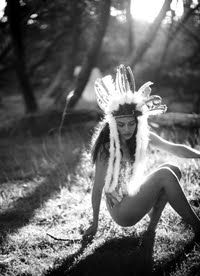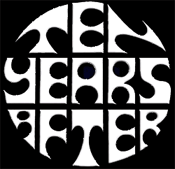Steve Miller was part of the great hippie season of San Francisco, but in reality he was a blues man who played elegant and refined blues-rock. When the acid-rock fashion died, Miller revealed his true mission: writing muzak that was both atmospheric and relaxing.
Raised in Texas, leader of a blues band in Chicago with Barry Goldberg, Miller arrived in San Francisco in 1966 and formed the Steve Miller Blues Band. At his side was singer, rhythm guitarist and childhood friend Boz Scaggs.
The sound of Children Of the Future (Capitol, 1968) is by all means hallucinogenic, but without sacrificing the structure of the song, and best of all, preserving all the aggressive boogie riffs of a well disciplined blues band. The album is stylistically divided in two sides. Side One is relatively traditional, the domain of the impeccable Scaggs, with blues cuts perturbed by solos a la Hendrix, ecstatic choruses and acid keyboard, as in Roll With It and Baby's Callin' Me Home. Side Two is experimental, as the times demanded, a multi-part suite for ecstatic voices, Jim Peterman's church organ and wild guitar. Fantastic melodies are enriched by cosmic overtones, with a spirited country flavor in Children Of The Future. Instrumentals, psychedelic and celestial, are placed in the middle of an epic and symphonic "Pink-Floydian" blues in the seven minute In My First Mind. Short intervals of turbulence and dissonance punctuate The Beauty Of Time, with its mantra-chorus grand finale.
Frequent use of electronic effects weakens the guitars' voice on Sailor (Capitol, 1968), albeit conferring to the music a wilder character. The opening song Song For Our Ancestors features a sustained organ in crescendo, mimicking the rhythm of an air raid siren. Living In The USA and Overdrive are catchy blues rock songs; Dime-a-dance Romance is Scaggs' best ballad.
Your Saving Grace (Capitol, 1969) and Brave New World (Capitol, 1969) are complementary albums. The first is a collection of soft rhythm and blues ballads like Your Saving Grace, Baby' s House, Feel So Glad. The second is a dynamic red-hot album, with a series of insistent blues rockers like Space Cowboy, My Dark Hour and Brave New World. After Scaggs and Peterman's departure the sound became progressively more manneristic and less bluesy.
Number Five (Capitol, 1970) is a roots-rock album, in a year when many were turning to country. More than anything, it is a pretext to span many stylistic fronts, from Going To Mexico, to Going To The Country, to Midnight Tango, always with grace and gentleness.
Carousel Ballroom, San Francisco, CA
April 26, 1968
Stereo soundboards
1. Blues Jam (with The Sons Of Champlin)
2. Baby What You Want Me To Do
3. Yonders Wall
4. Next Time You See Me
5. Roll With It
Total time 48:42
Carousel Ballroom, San Francisco, CA
April 28, 1968
CD 1:
1. I Got My Eyes On You
2. Born In Chicago
3. Highway Child
4. Fannie Mae
5. Got Love If You Want It
6. Steppin' Stone
7. Blues With A Feeling
8. I Worry About My Baby Too Much
9. Yonders Wall
10. Mercury Blues
CD 2:
1. Living In The USA
2. Blues For The Goldberg/Miller Blues Band a/k/a Song For Our Ancestors
3. Key To The Highway
Total time 1:33:26
Carousel Ballroom, San Francisco, CA
May 10, 1968
1. Living In The USA (fades in) >
2. Mercury Blues
3. Steppin' Stone
4. Feel So Good
5. Junior Saw It Happen
6. Yonders Wall (cut)
Total time 47:24
Steve Miller - guitar, vocals
Boz Scaggs - guitar, vocals
Jim Peterman - keyboards
Lonnie Turner - bass
Tim Davis - drums

























































































2 comments:
Thanks very much a great post
Thanks for posting these. I've seen some of this material before, but broken up or incomplete. Nice to have it all in one place. I also lost interest when Steve went more "mainstream", but can't blame him for grabbing some cash. Larry
Post a Comment